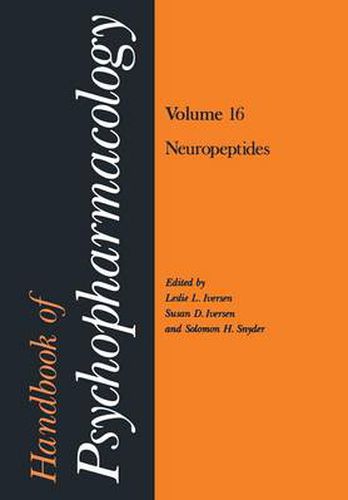Readings Newsletter
Become a Readings Member to make your shopping experience even easier.
Sign in or sign up for free!
You’re not far away from qualifying for FREE standard shipping within Australia
You’ve qualified for FREE standard shipping within Australia
The cart is loading…






This title is printed to order. This book may have been self-published. If so, we cannot guarantee the quality of the content. In the main most books will have gone through the editing process however some may not. We therefore suggest that you be aware of this before ordering this book. If in doubt check either the author or publisher’s details as we are unable to accept any returns unless they are faulty. Please contact us if you have any questions.
It is now eight years since the first Handbook volumes on Basic Neuro pharmacology were published, and there have been many important advances. As in many other areas in science, progress in this field has depended to a considerable extent on the availability of new experimental methods, and Volume 15 reviews some major recent developments, including new autoradiographic techniques that allow direct visualization of drug and transmitter receptors in the nervous system, and the pin pointing of the precise locations of the changes in brain metabolism elicited by various drug treatments. Volumes 16 and 17 cover two of the most active areas for basic research in psychopharmacology at the moment: the characterization of drug and transmitter receptors in brain by radioligand binding techniques, and studies of the role of small peptides in brain function. The latter area, in particular, illustrates how rapidly progress continues to be made in basic research on the mechanisms of chemical communication within the nervous system. Eight years ago when the Handbook first appeared none of the opioid peptides (enkephalins and endorphins) had yet been identified. Since then a whole new area of basic biological research has focused on these substances, and in addition we know of more than thirty other neuropeptides with putative eNS trans mitter functions.
$9.00 standard shipping within Australia
FREE standard shipping within Australia for orders over $100.00
Express & International shipping calculated at checkout
This title is printed to order. This book may have been self-published. If so, we cannot guarantee the quality of the content. In the main most books will have gone through the editing process however some may not. We therefore suggest that you be aware of this before ordering this book. If in doubt check either the author or publisher’s details as we are unable to accept any returns unless they are faulty. Please contact us if you have any questions.
It is now eight years since the first Handbook volumes on Basic Neuro pharmacology were published, and there have been many important advances. As in many other areas in science, progress in this field has depended to a considerable extent on the availability of new experimental methods, and Volume 15 reviews some major recent developments, including new autoradiographic techniques that allow direct visualization of drug and transmitter receptors in the nervous system, and the pin pointing of the precise locations of the changes in brain metabolism elicited by various drug treatments. Volumes 16 and 17 cover two of the most active areas for basic research in psychopharmacology at the moment: the characterization of drug and transmitter receptors in brain by radioligand binding techniques, and studies of the role of small peptides in brain function. The latter area, in particular, illustrates how rapidly progress continues to be made in basic research on the mechanisms of chemical communication within the nervous system. Eight years ago when the Handbook first appeared none of the opioid peptides (enkephalins and endorphins) had yet been identified. Since then a whole new area of basic biological research has focused on these substances, and in addition we know of more than thirty other neuropeptides with putative eNS trans mitter functions.